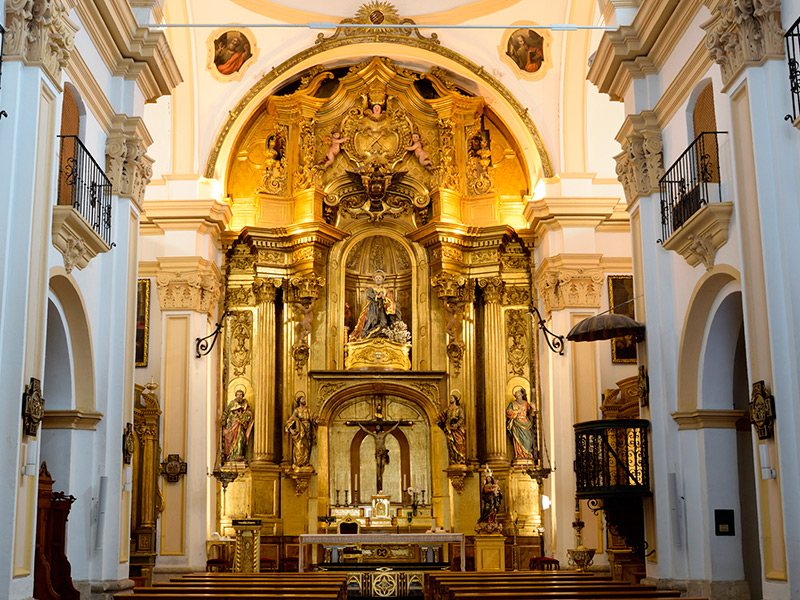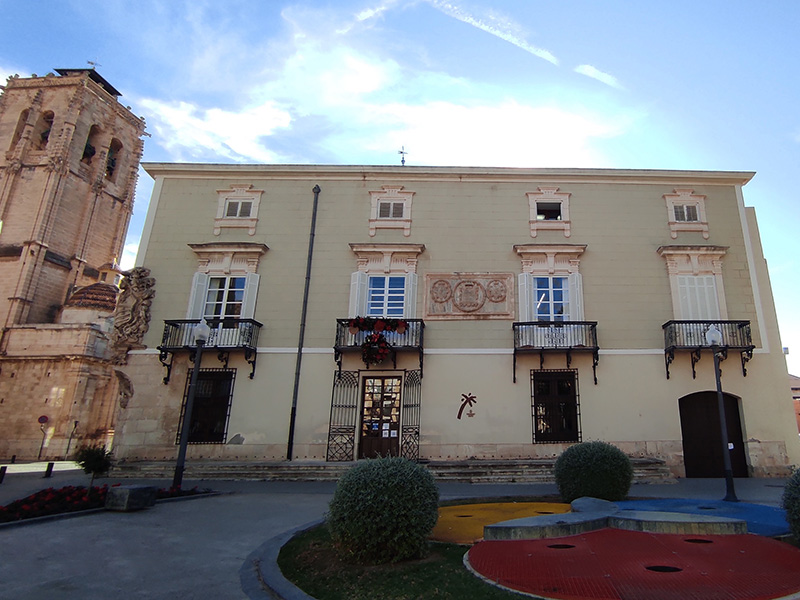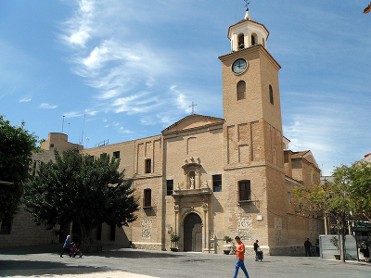


Plaza de San Pedro, 1
30004 MURCIA
Telephone: +34 968 210 081
Horario:
De lunes a viernes: 10 a 12:30 horas y de 19 a 20:30 horas
Sábados: 10 a 12:30 horas y de 18 a 20:30 horas
Domingo: 9:30 a 13:30 horas y de 17:30 a 20:30 horas.


Marqués de Arneva nº 1 (acceso a pie por la Plaza del Carmen)
03300 ORIHUELA
Telephone: 965 304 645 - 965 302 747

Plaza Ramón y Cajal, s/n.
30130 BENIEL
Telephone: +34 968 600 555
La iglesia de San Bartolomé se construyó tras algunas desavenencias con el marqués de Beniel que consideraba que el terreno donde se iba a ubicar el edificio era de su propiedad. Se llegaron a pagar 7.000 reales de vellón por el territorio que ocuparía este templo barroco, cuya cúpula es muy similar a la del templo de la Nora.
Una de las particulares del templo es que conectaba directamente con la casa-palacio de los marqueses, que también hicieron generosas aportaciones para la finalización de la obra.
No fue una de las iglesias más baratas de la época y es que poco a poco se fueron encareciendo los trabajos, presupuestados inicialmente con 40.000 reales de vellón. En varias ocasiones hubo que pedir préstamos tanto al Cabildo de la Catedral de Murcia como a diversas iglesias como a la de Chinchilla.
A pesar de los bombardeos, el edificio resistió muy bien a uno de los episodios más trágicos en la historia española como fue la Guerra Civil. Tras varias restauraciones, la iglesia se mantiene intacta desde 1999.

Pza. de España, 7
30180 BULLAS
Telephone: +34 968 652 176
The Church, being declared National Monument in February 1982, dates from the 18th century although it acquired its definitive structure between 1799 and 1804. During this period it suffered one of its major redesigning.
Once Bullas achieved the political division from Cehegín, in 1689 Charles II of Spain granted to Bullas the privileged status of royal borough, and then the municipality also aspired to religious independency. According to several studies, the first building work was conducted by Francisco Bastida and Francisco Muñoz. The Church was unveiled on 8 December 1723, feast of the Immaculate Conception. The name 'Our Lady of the Rosary' was adopted through popular vote with overwhelming majority.
In the late 18th century a restoration was conducted under surveillance of Jerónimo Martínez de Lara. The Church would display a similar layout to that it shows today: Latin Cross ground plan of three naves with crossing and a central dome on scallops. The difference between the original structure and that which has survived till our times is primarily the location of the sacristy, as firstly it was located where the chapel of the Sacred Heart lies in these days.
The central nave is covered by barrel vaults with transverse arches and the lateral naves, by groin vaults. The influence of Martínez de Lara has remained visible in the tower and the sacristy with clear neoclassical influence. The decoration of the chapel of the Sacred Heart, also built in the early 19th century, is based in neo-Gothic elements, typical of the period when it was built.





Avenida de Murcia, 75
30180 BULLAS
Telephone: +34 968 652 244
| ACTIVITY | + INFO | AVAILABITY | PRICE |